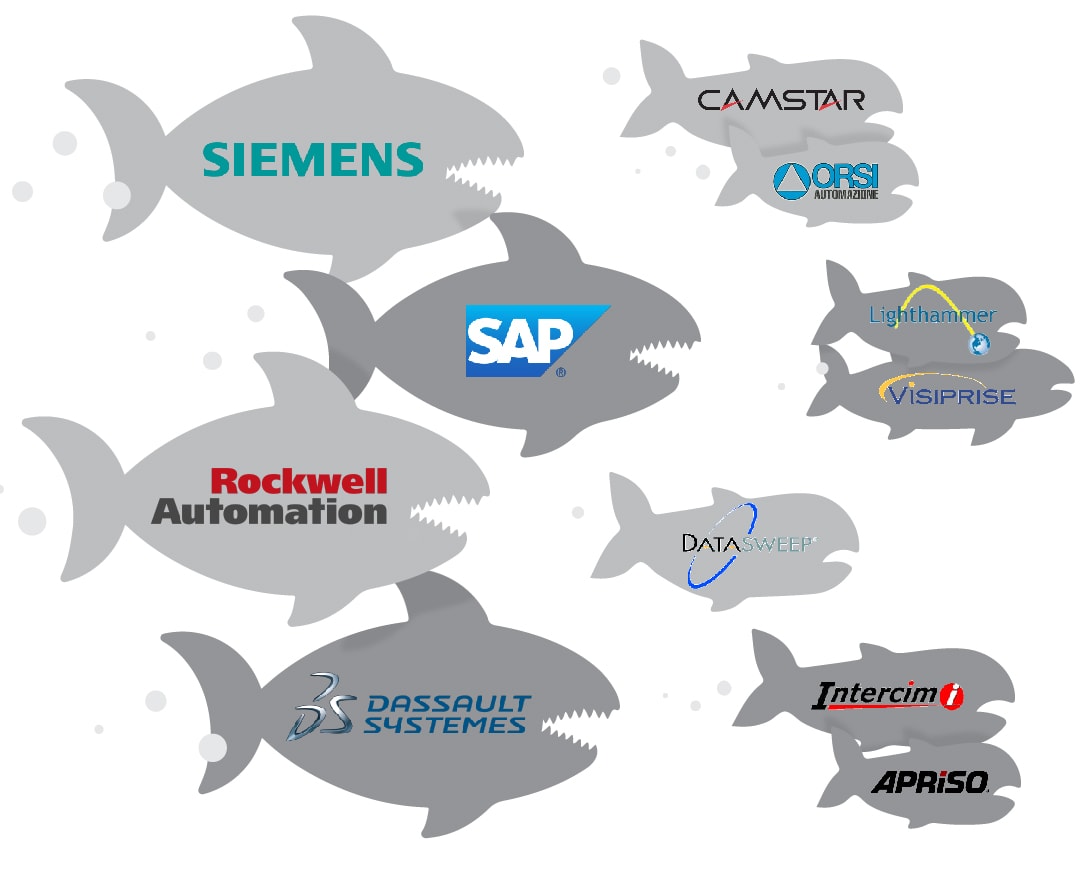I was with a colleague the other day chatting about Manufacturing Execution Systems (MES) — all the different players, the nonstop consolidation, the new technologies in IOT, AR, MI and a bunch of other acronyms. After a couple of minutes, he sheepishly confessed that he didn’t really follow what I was talking about but wanted to know more. He’s been an MES software engineer for years, deploying MES solutions for a bunch of clients, but didn’t know much about the market or the history of the solutions that he’d so successfully deployed. And thus a new blog was born – this time around the MES market, where it’s come from, where it seems to be going and some drama along the way.
When I first started at Brock, around 20 years ago, we had quite a good thing going delivering custom MES to a variety of customers. Our very strong, capable software engineers were building systems to do all the things we still do today in MES – track and trace, recipe management, performance monitoring, routing/scheduling, etc. VB and C# were our weapons of choice, and the systems were rock-solid in that middle layer of execution, tightly connected to the automation layer and to the planning systems that made the business tick. At the time, there were no commercial, off-the-shelf systems to configure; we built it, we supported it, and we improved the solutions as new requirements popped up. And some are still operating to this day.
As we were plugging away growing our business, there were some interesting developments in the market. Companies were starting to pop up that offered an “MES Product” – essentially monetizing custom solutions and bringing them to market as a standalone product. And when that happened, the big automation and software players started to pay attention. For automation suppliers like Siemens, Rockwell, Schneider, GE, here was a perfect opportunity to build on their automation story and add functionality that their customers were asking for. A similar pattern emerged from big software players looking to move down into the plant-floor. And the acquisition frenzy began…

And for us, we moved from building custom solutions, to configuring these off-the-shelf MES products — a very good outcome for our customers who want to leverage the value a product supplier brings (continuous product R&D, vision, roadmap), with our MES domain expertise and methodology. And we haven’t looked back since. In fact, if I take a snap shot of where we are today, serving our manufacturing customers, we’re working on projects that include numerous different MES products, across different industries and countries.
In terms of the MES market, it feels like we’re in the middle of another big shift. The first one was all about acquisitions – building out those core MES functions that were defined by the S95 standard. Now most of that technology is mature – it’s been running plants for years and considered stable. The big development now is adding to that core to truly offer a digital solution from supply chain to manufacturing, to aftermarket and back again. The elusive ‘digital twin’ is the goal. If you’re wondering, no manufacturer we know is there yet, but boy they’re working hard to get there. And they’re looking to their software partners to add to their portfolio to help. Things like AR, VR, Machine Learning, AI and IOT are becoming expected pieces of the puzzle. Just look at the recent PTC/Thingworx – Rockwell development. For manufacturers, these consolidation of offerings, from their trusted suppliers, means that digital goal is getting closer and closer, and for a company like Brock, it means we can provide a single integrator approach to the whole space. We have a couple of customers that are using Rockwell FTPC for their MES, Thingworx to provide IOT connectivity and mashups, and Brock to integrate it all together. A very turnkey approach at the software and integration layers – or more practically as our customers describe it, ‘one throat to choke’. (we haven’t been choked yet, so I assume that’s good).
Where is the MES product market going? Our friends at Gartner paint a similar picture to what I’ve described around the history of MES but are even more hard-hitting about the future of the space. For instance, they predict by 2020 (we’re in the home stretch of 2018 so this is close!), 50% of pure play MES vendors will disappear. That’s a significant consideration for manufacturers as they decide who they want to work with – they’re looking for a software partner that will not only be around for the long term but financially capable of adding to their portfolios as digital keeps expanding.
So, lots of moving pieces when it comes to the MES product market and a consolidation trend that doesn’t seem to have crested yet.
As an integrator of MES/digital solutions, we’re often asked ‘what technology should I consider’? As you can imagine, the answer is not always straightforward. However, one thing I can say with 100% certainty is that MES is more than technology. Deciding what MES software to use shouldn’t be approached with a long spreadsheet of questions that every solution provider will put a “Y” next to. It should be approached (forgive the simile) like a marriage:
- You’re going to be together for a long time – typical lifecycle is 20+ years
- Systems are mission critical, so you need deep relationships with the right people in the software organization to get to answers quickly when there are bumps in the road
- You need to matter to the software partner, and they need to matter to you – can’t be a transactional relationship, and you need to be able to influence outcome
- You need transparency about the future — understanding where the company is going with their product investment and roadmap is key
If you’re comfortable with what you learn from those conversations, then we often recommend (and sometimes help facilitate) a “Day-in-the-Life” approach to evaluating software. Essentially, this means working with a short list of potential software partners to demonstrate a day in the life of their software in your plant environment – with your processes and your data. You’ll really learn who wants to work with you, what they’re capable of and whether or not there’s a joint fit.
If you’re interested in learning more about our “Day-in-the-Life” approach, or just want to learn more about what to look for when assessing the MES market, click here and we’d be happy to discuss in more detail and even share some examples.

